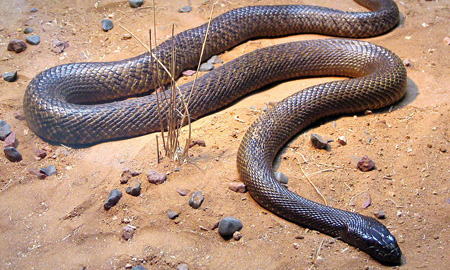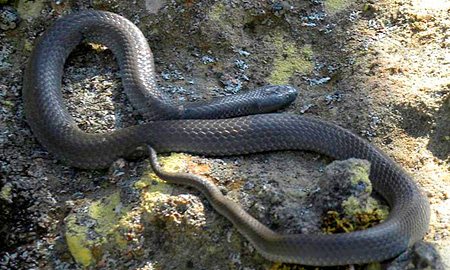Introduction
Australia is renowned for its distinct wild animals, consisting of a diverse selection of venomous serpents. These animals, while frequently been afraid, play vital duties in keeping ecological balance. Recognizing the conservation of Australia's venomous snakes and the duty that education and learning and awareness play can substantially improve our conjunction with these interesting reptiles. This short article explores numerous elements of serpent conservation, the significance of public education and learning, and useful first Great post to read aid actions for serpent bites.
Conservation of Australia's Venomous Snakes: The Function of Education And Learning and Awareness
In Australia, serpents are an important part of the ecological community, managing insect populaces and adding to biodiversity. Nonetheless, many types face hazards because of habitat loss, environment change, and human activity. The preservation efforts targeted at safeguarding these reptiles hinge considerably on education and learning and raising awareness among the public.
By informing individuals concerning serpent habits, their environmental importance, and risk-free practices for cohabiting with them, we can reduce fear-driven actions that bring about unneeded killings or injuries. Educational initiatives help dispel myths bordering serpents-- such as the typical question: are tiger snakes venomous?-- and urge regard for their duty in nature.
The Significance of Recognition Programs
Awareness programs are crucial in transforming public understandings concerning snakes. Lots of people check out these reptiles as inherently hazardous without recognizing their environmental duties. Public outreach efforts can include workshops, area occasions, institution programs, and information campaigns designed to inform individuals concerning:

- Identification of poisonous species: Understanding which snakes are dangerous aids individuals stay clear of encounters. Safe behaviors: Teaching people just how to act around serpents can avoid bites. First help knowledge: In situations where attacks do occur, being informed regarding first aid for snake bites can save lives.
By raising recognition with structured education efforts, we can promote a society that appreciates wildlife and focuses on coexistence rather than fear.
Types of Venomous Snakes Found in Australia
Australia is home to some of the world's most venomous snakes. Here's a short summary:
Tiger Serpent (Notechis scutatus)- Commonly found in seaside regions. Known for its potent neurotoxic venom. Frequently seen near water bodies.
- Highly hostile with potent venom. Responsible for more snakebite casualties than any type of various other types in Australia.
- Known for its ambush searching style. Has swift striking speed with highly neurotoxic venom.
- One of Australia's biggest poisonous snakes. Its attack can deliver huge amounts of neurotoxin.
- Generally non-aggressive however still has harmful venom. Found predominantly along the southwestern coast.
Understanding Their Habitats
Understanding tiger serpent habitat is crucial for both preservation efforts and public security. Tiger snakes grow in areas near water resources such as swamps, lakes, and marshes but they also occupy seaside areas. Securing these habitats is essential for guaranteeing the survival of not only tiger snakes however also various other wild animals within these ecosystems.
Habitat Defense Initiatives
baby Tiger SnakeVarious organizations work towards habitat security through efforts such as:
- Establishing protected areas Restoring weakened habitats Promoting sustainable land use practices
These determines not just benefit tiger snakes but contribute to total biodiversity conservation.
The Role of Study in Preservation Efforts
Research plays a pivotal function in understanding snake populations and their health and wellness condition. Ongoing researches into the ecology and behavior of Australian snakes notify preservation strategies by offering data on populace numbers, breeding patterns, and hazards dealt with by various species.

Key Research study Areas Include:
- Venom analysis Population dynamics Habitat preferences
This research study can assist efficient management plans to safeguard vulnerable varieties while facilitating conjunction with humans.
First Aid for Serpent Bites: Necessary Knowledge
One critical aspect that links with education is understanding what to do in instance one struggles with a serpent bite-- a circumstance that requires prompt action skills.
What Every Emergency treatment Package Need To Contain
An appropriate snake bite first aid set must consist of:
- Compression bandages Sterile gauze pads Antiseptic wipes A splint or immobilization device Emergency contact numbers
Step-by-Step Emergency treatment Treatment for Serpent Bite
Remain calm; try to restrict motion as it may spread poison quickly. Apply a compression plaster above the bite website without removing circulation. Keep the bitten limb immobilized at or listed below heart level. Seek emergency clinical aid immediately.Why Education and learning on Emergency treatment Is Crucial
Educating communities about emergency treatment procedures makes certain prompt reactions throughout emergencies which can dramatically reduce morbidity associated with serpent attacks across Australia.
Frequently Asked Concerns (Frequently asked questions)
1. Are tiger snakes venomous?
Yes! Tiger serpents are very poisonous with neurotoxic results which make timely medical therapy important after a bite.
2. What ought to I do if bitten by a baby tiger snake?
Follow standard first aid treatments right away-- keep calm, immobilize the limb, apply stress above the bite site using a plaster or towel without restricting blood circulation-- and seek clinical assistance without delay.
3. How common are serpent bites in Australia?
While stats vary year-to-year because of variables like weather conditions influencing serpent tasks; ordinary reports recommend around 300 instances yearly with casualties being relatively rare as a result of better clinical responses.

4. Can I deal with a snake bite at home?
No! Home therapies such as using ice or drawing out poison are inadequate; professional medical attention is required after any kind of presumed bite incident.
5. What's special regarding eastern brown snakes?
They're understood for their aggressive nature integrated with potent poison; they make up the majority of deadly bites in Australia due mostly to their distance to inhabited areas!
6. What are some usual signs following a snake bite?
Symptoms may consist of swelling around the bite location, pain at or near the website; systemic symptoms could entail nausea or vomiting or trouble taking a breath depending on contaminant type soaked up into bloodstream!
Conclusion
Conservation efforts surrounding Australian venemous serpents hinge on reliable academic approaches that encourage communities while cultivating respect in the direction of these often-misunderstood creatures! By improving recognition concerning their environmental significance alongside appropriate safety protocols-- including first aid understanding-- we pave roads toward sustainable coexistence profiting both people & & wild animals alike!
In essence-- the discussion surrounding preservation needs to continue prospering through aggressive interaction marrying clinical study alongside community involvement making certain purposeful effect today & & tomorrow!